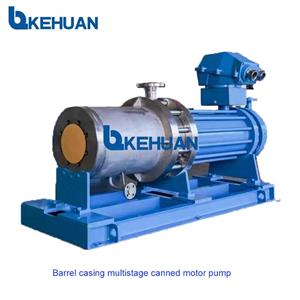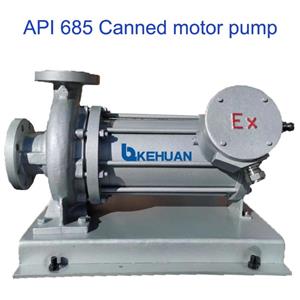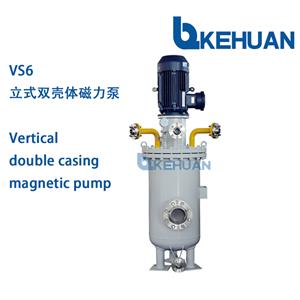Magnetic Couplings, NPSH Margin & Reverse Runaway Speed
Q. What are the effects of increasing temperature on the magnetic couplings in a rotary sealless pump?
A. Eddy currents in the containment shell are one source of heat in a sealless pump. Heat is also generated by liquid friction as the inner magnet moves through the liquid inside the containment shell.
Magnetic couplings undergo some loss of torque capability with increasing temperature. Additionally, each permanent magnet material has a unique Curie point, which is the temperature at which the material loses all magnetism. Below the Curie point, two ranges are referred to as reversible temperature and irreversible temperature.
Reversible losses naturally occur in the normal rated temperature range of the coupling. The coupling will return to full strength when it cools to ambient temperature. Between the rated temperature of the coupling and the Curie point is a range in which the magnets lose a percentage of their strength permanently as a function of time and temperature. End users should consult the manufacturer for specific information about coupling torque versus temperature prior to sizing the magnetic coupling for a given application. The generally recognized, useful temperature limits vary with the magnet type and grade.
For more information on magnetic coupling temperature effects, see ANSI/HI 4.1-4.6 Sealless, Magnetically Driven Rotary Pumps for Nomenclature, Definitions, Application, Operation, and Test.
Q. What information is available to determine the appropriate net positive suction head (NPSH) margin for my rotodynamic pump?
A. The determination of an appropriate NPSH margin considers factors that impact performance and service life of the pump. An inadequate NPSH margin may affect pump head, noise and vibration. Pump service life may be reduced because of material erosion and damage to bearings or seals.
Recommended margin ratios can vary by pump type and application, with higher values applying to pumps with higher operating speeds and/or continuous operation outside the preferred operating range of the pump.
A greater NPSH margin is not detrimental to the pump but may not be desirable. Specifying a higher margin may result in a non-optimal pump selection that will add costs to the pumping equipment (larger/slower pumps or pumps with inducers), reduced efficiency, or a reduced operating range because a higher suction specific speed pump was selected. Requiring a greater suction head to increase the NPSH margin may also increase the cost of the pumping station structure.
The recommended use of NPSH margin involves a known pump design having fixed NPSH3 characteristics that result in a reasonable and safe value of suction specific speed. In such a situation, the NPSH margin is applied to the NPSH3 at the flow rate of interest to obtain the minimal value of net positive suction head available (NPSHA). The use of a higher value of NPSH margin under these circumstances generally results in more conservative conditions for the pump. If the recommended NPSH margin cannot be obtained, then choosing a lower operating speed for the pump for a fixed flow rate will generally result in a conservative selection.
End users are cautioned with regard to obtaining the NPSH margin by specifying pumps with higher suction specific speeds that have lower NPSH3 values. Higher suction specific speed pump designs are more likely to experience objectionable noise and a narrower operating range compared to lower suction specific speed pump designs. Poor suction conditions may result in flow separation and distorted flow at the impeller inlet, which can adversely affect the NPSHA of the pump.
For more information about NPSH margin for rotodynamic pumps, see ANSI/HI 9.6.1 Rotodynamic Pumps – Guideline for NPSH Margin.
Q. What is a rotodynamic pump’s reverse runaway speed?
A. A sudden power and check valve failure during pump operation against a static head will result in reverse pump rotation. If the pump is driven by a prime mover offering little resistance while running backwards, the reverse speed may approach its maximum consistent with zero torque. This speed is called reverse runaway speed.
If the head, under which such operation may occur, is equal to or greater than that developed by the pump at its best efficiency point during normal operation, then the runaway speed may exceed that corresponding to normal pump operation. This excess speed may impose high mechanical stresses on the rotating parts of the pump and the prime mover.
Therefore, knowledge of this speed is essential to safeguard the equipment from possible damage.
Expressing the runaway speed as a percentage of normal operating speed is practical. The head consistent with the runaway speed in this case is assumed to be equal to that developed by the pump at the best efficiency point.
Transient conditions, during which runaway speed may take place, often result in considerable head variations because of surging in the pressure line.
Because most pump units have relatively little inertia, surging can cause rapid speed fluctuations. The runaway speed may, in such a case, be consistent with the highest head resulting from surging.
Therefore, knowledge of the surging characteristic of the pipeline is essential for determining the runaway speed, and this is particularly important in the case of long lines.
For further review, see ANSI/HI 2.4 Rotodynamic (Vertical) Pumps for Manuals Describing Installation, Operation, and Maintenance.
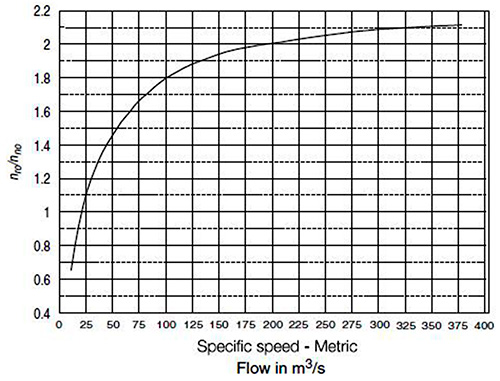
Figure A.7. Reverse runaway speed ratio versus specific speed (metric)
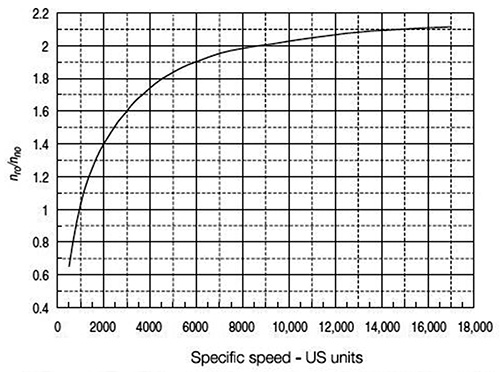
Figure A.8. Reverse runaway speed ratio versus specific speed (U.S. units)

